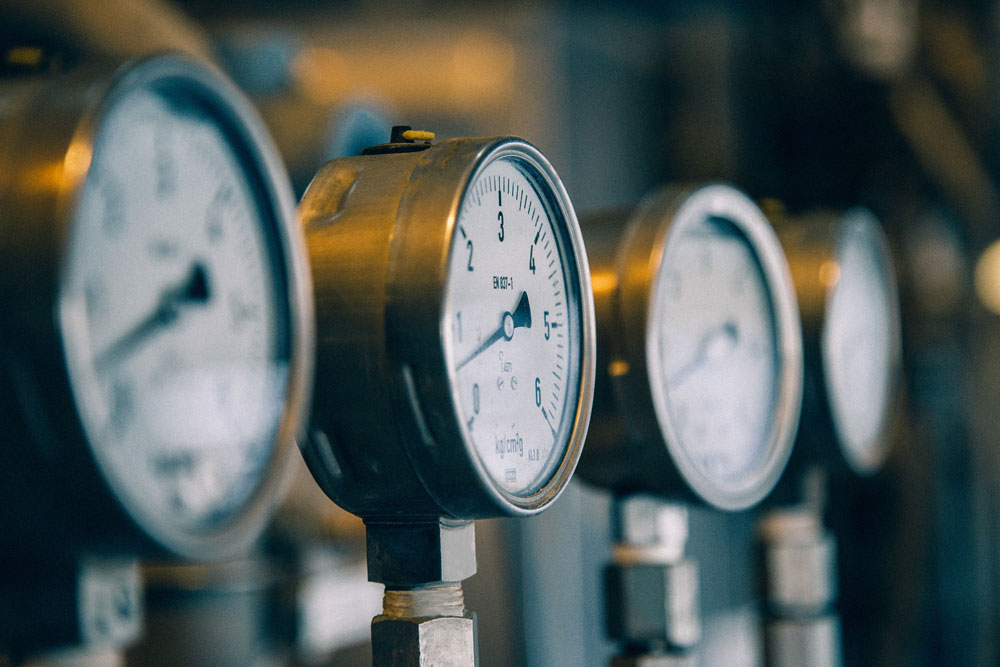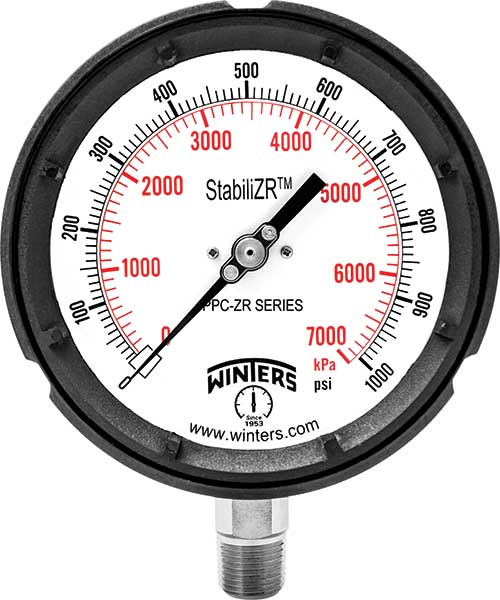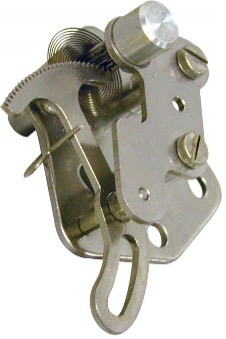
French engineer Eugene Bourdon patented the Bourdon tube pressure system in 1849. Since then, the pressure system is second only to wristwatches in overall adoption and installation.
Due to the critical role mechanical pressure systems have played over the decades, the basic components of a pressure gauge have remained relatively unchanged (Bourdon tube, socket, movement and dial indication).
The primary role of a Bourdon tube pressure gauge is to provide a local indication of how a process is performing. By checking the pressure gauge’s measurement of the pressure in the system, operators or maintenance personnel can quickly determine if equipment is operating safely and at optimal efficiency.
A pressure gauge usually provides the first indicator of a problem. A pressure drop is a warning of leakage in the system while a pressure spike indicates a blockage, possibly in a filter or valve. While there are many other ways these problems can be identified, a pressure gauge is one of the simpler visual instruments to implement and use. As pressure gauges gained in popularity, they were introduced and installed in many varying areas, including applications that induce high levels of vibrations and pulsations.
Vibrations typically occur when other equipment further down the process line is not properly balanced or shimmed and, therefore, emits a high level of mechanical resonance, which cascades along the complete piping system. Pulsation is a direct result of equipment—for example, pumps or valves—being turned on and off quickly, resulting in pressure spikes (also known as water hammer).

Vibration and pulsation in the pressure system cause the gauge pointer to bounce or shake rapidly and uncontrollably. This makes it difficult, if not impossible, to record an accurate reading of system pressure, nullifying the effectiveness of the gauge. Prolonged vibrations and pulsation cause premature wear, frequently requiring the gauge to be repaired, recalibrated or replaced.
The Introduction of Liquid-Filled Pressure Gauges
Relative to the overall lifeline of pressure gauges, the introduction of liquid filling is new. Manufacturers began incorporating liquid filling into the casing of pressure gauges for applications with excessive amounts of vibration and pulsation.
The liquid-fill viscous fluid encapsulates the internals of the pressure gauge and safeguards it against vibration and pulsation, with the direct result being no bounding pointer and a better pressure reading.
The type of liquid fill selected depends on the process and ambient conditions, including the surrounding temperature range, the media temperature and the chemical compatibility of the process media and its surroundings. Some common fill fluids include glycerin, glycerin/water mix and silicone.
The liquid in the case provides hydrostatic drag (resistance) against continuous movement. The fluid also acts as a lubricant for the gauge internals, eliminating the threat of premature wear and reducing the probability of damage from vibration and pulsation. The use of liquid-filled pressure gauges solves the issues of vibration and pulsation but also introduces several other problems, including:
Leaking
The most serious leak-related problem for a gauge occurs once it is installed. If a gauge leaks, the liquid ends up on the factory or plant floor, resulting in a slip hazard and an unsafe working environment. This can prevent liquid-filled gauges from being installed in facilities with strict safety guidelines.
A further point regarding leaking has to do with the gauge itself. Once the gauge loses its liquid, it decreases the gauge’s ability to dampen vibration, negating its effectiveness. Also, depending on how much liquid has leaked from the gauge, the meniscus may rest at a level that makes the gauge pointer difficult to read.
Temperature
The fill fluid added to a pressure gauge also affects the temperatures at which it can operate. Glycerin, which is often the standard fill in liquid-filled gauges, has a temperature range of approximately -20 C to 65 C (-4 F to 150 F). Silicone fluid is required for temperatures outside of this range, which can be more expensive, result in longer delivery times and lead to other media compatibility issues.
Discoloration
Gauges that are installed in locations with prolonged exposure to sunlight, or gauges exposed to ambient or process media heat above fill fluid specifications, can experience discolored liquid. This makes the gauge rather unsightly to view and difficult to read.
Repair
If a liquid-filled gauge needs servicing or recalibration, the process becomes more involved than with other gauges. The gauge must first be dried, before being repaired and refilled. This can increase the turnaround time of the gauge.

The Evolution of Pressure Gauges
As pressure gauges continued to be installed, other dampening solutions were required to solve vibrating and pulsating challenges without the disadvantages of liquid filling. This is where dry pressure gauges may be useful: dampening without the problematic issues of liquid filling.
With dry pressure gauges, the pointer shaft extends out the back of the movement with two paddles that are added to the shaft. This extended portion of the shaft is encased by a cap filled with dampening compound. The cap is then permanently sealed, preventing the dampening compound from leaking.
With the small amount of fluid being contained in a sealed cap, these dry pressure gauges combine the best features of a dry gauge and a liquid-filled gauge. This can lead to advantages such as fewer leaking gauges, higher temperature tolerance, no discoloration and quicker turnaround for repairs and calibration.
These gauges can also operate over a wider range of ambient and process temperatures (-40 C to 120 C, or -40 F to 250 F) and can be installed in direct sunlight without the risk of discoloration.
The gauge’s role as an indicator of efficiency or potential failure makes it critical in a process’ overall health.

